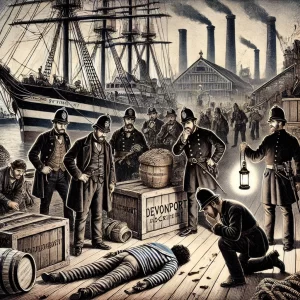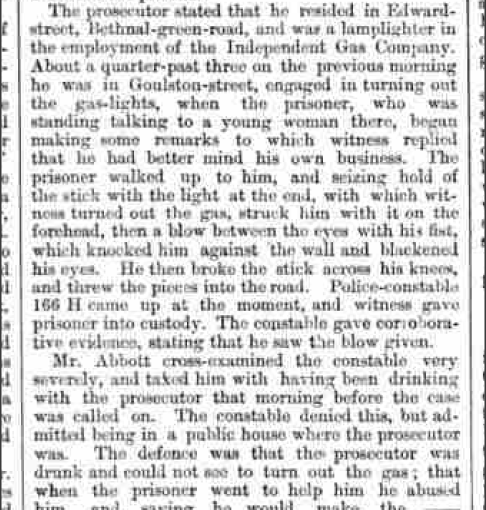Illustrated London News – Saturday 18 September 1852.
WILLS

The will, with four codicils, of the late J. M. W. Turner, R.A., has, during the past week, been admitted to probate. The personality was valued at £140,000. There were nine executors appointed; five only have proved, namely: the Rev. H. S. Trimmer, George Jones, Charles Turner, Philip Hardwick, and Henry Harper, Esqs. His finished pictures he bequeaths to the trustees of the National Gallery; and, with the exception of two large ones, the whole are to be placed in one or more rooms, to be called “Turner’s Gallery”—and, if no rooms are so set apart or erected for such purpose within a specified time—which, by a subsequent codicil, he has extended from five to ten years—the pictures, in the meantime remaining in his late residence, Queen Ann-street, Cavendish-square, are then to be so sold; and in such event, he leaves, from the sale thereof, to the Pension Fund of the Royal Academy, £1000; and to the Artists’ General Benevolent Fund, the Foundling Hospital, and the London Orphan Fund, £500 each. The legacies and annuities are of small amount. His executors are to erect a monument to his memory in St. Paul’s Cathedral, at an expense of £1000. The residue of his property, real and personal, to be converted into funded property, and employed in the erection of an institution to be called “Turner’s Gift,” for the maintenance and support of decayed male artists of English birth.
The will of the late Vice-Chancellor Parker has been proved by Archibald Smith, Esq., one of the executors. The whole of his property, real and personal, he has bequeathed to the trustees under his marriage settlement for the benefit of his own issue; the personality was sworn under £10,000. The will, which is in his own handwriting, bears date 16th Nov. 1851, and is very closely written on one sheet of note paper, occupying the entire four sides, and witnessed by his butler and footman.
The will of the late Mr. Neild, which has lately caused so much excitement, on account of his having left the bulk of his large property to Her Majesty, is likely to be disputed, two caveats having been entered on behalf of the next of kin against the proof of the will—it is supposed on the ground of insanity.
The will of John Squire, Esq., banker, Pall-Mall, was proved under £60,000 personality.
Explanation and Historical Context
This article reflects Victorian practices of will-writing and probate, offering valuable insights into the legal and cultural framework of the time.
Analysis of Each Will
1. J. M. W. Turner’s Will
- Cultural and Artistic Legacy:
- Turner’s will reflects his dedication to preserving and promoting art. By donating his finished works to the National Gallery and planning “Turner’s Gallery,” he sought to ensure public access to his artistic achievements.
- His establishment of “Turner’s Gift” for impoverished male artists showcases Victorian values of charity and the social responsibility of the wealthy.
- Probate Process and Executors:
- Executors, often trusted individuals, were tasked with fulfilling the deceased’s wishes. Only five of Turner’s nine executors proved the will, indicating flexibility in appointing substitutes in such matters.
- Legal Mechanisms:
- Turner used codicils to amend his will. Extending deadlines from five to ten years highlights how codicils could accommodate unforeseen delays.
2. Vice-Chancellor Parker’s Will
- Handwritten Will:
- Parker’s handwritten will on one sheet, witnessed by household staff (butler and footman), reflects a pragmatic approach to legal formalities. Wills had to be signed and witnessed, ensuring they were legally valid.
- His bequest to trustees under a marriage settlement for the benefit of his children demonstrates the Victorian emphasis on protecting family wealth and lineage.
- Probate Valuation:
- His personal estate, valued under £10,000, provides a sense of his socioeconomic status, important for genealogists and researchers.
3. Mr. Neild’s Will
- Controversy and Disputes:
- Neild’s decision to leave his wealth to Queen Victoria sparked disputes from his next of kin. Caveats filed to contest the will on grounds of insanity highlight how Victorian probate law allowed challenges based on mental capacity.
- Such disputes often required substantial evidence, underscoring the importance of clear legal processes and witnesses.
- Philanthropy and Royal Connections:
- Bequeathing wealth to the monarchy was uncommon but not unprecedented. This act raises questions about his motivations, which might interest social historians.
4. John Squire’s Will
- Banker’s Estate:
- Squire’s personal estate of £60,000 reflects the financial success possible in Victorian banking. His will might interest those studying the economic elite of the time.
Insights into Victorian Probate Laws
- Role of Executors:
- Executors played a central role in executing wills, including distributing assets and erecting memorials (e.g., Turner’s monument in St. Paul’s Cathedral).
- Probate and Valuation:
- Estates were valued for probate purposes, reflecting the wealth and social standing of the deceased. Large estates often attracted public interest, as seen with Turner and Neild.
- Witnessing and Validity:
- Wills required at least two witnesses. The use of household staff (Parker’s butler and footman) underscores the accessibility of witnesses within one’s immediate surroundings.
- Challenges to Wills:
- Disputes, like those involving Neild’s will, reveal the potential for familial conflict and the emphasis on mental capacity and intent in validating a will.
- Charitable Bequests:
- Victorian values are evident in the frequent inclusion of charitable gifts. Wills often reflected a desire to leave a lasting legacy or support societal causes.
Uses for Historians, Researchers, and Genealogists
- Historians:
- Study of wills reveals societal norms, class structures, and cultural priorities. Turner’s will, for example, underscores the importance of art in Victorian England.
- Genealogists:
- Details like executors, beneficiaries, and witnesses provide clues for tracing familial or professional relationships.
- Legal Scholars:
- The article illustrates probate laws, including the use of codicils and mechanisms for contesting wills, offering insights into Victorian legal practices.
- Cultural Researchers:
- The bequests for orphans, hospitals, and decayed artists highlight the philanthropic mindset of the Victorian elite, shaping public welfare systems.
Victorian wills reveal art legacies, philanthropy, and legal disputes: Explore the 1852 probate of J.M.W. Turner and more! #VictorianHistory #Genealogy #ArtHistory #LegalHistory #HistoricalResearch




